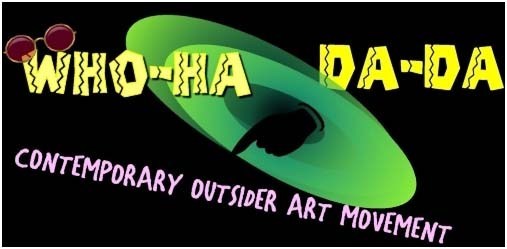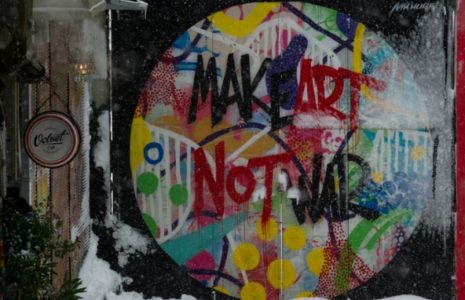Dada is anti-art and anti-all!
“Life is art, and art is life!”
By: An Uncertain Author
History is full of heroic movements that have changed the common perception of humanity and life. Some of these movements have been radical and resulted in blood, while others have been more moderate and lean on the conservative side. But that is the nature of man – he will always find ways to express himself and what’s going on in his mind and belief system. The process starts when we are in the womb kicking and playing around till we reach the grave.
One of those radical movements that changed our beliefs was the Dada style of art. The campaign, unlike most other organizations, believed in nothing yet challenged every commonly held view. The members of Dada were so opposed to the official narrative that at times they were heard saying, “Dada is anti-Dada!” In other words, they believed in nothing, not even themselves, but reckoned every structure is there to be challenged.
What Exactly is the Dada Style of Art?
Any movement is only as substantial as its belief patterns are and its ability to convince more members concerning that faith. The question is, how was Dada able to thrive and cause mass disruptions if they believed in nothing?
So what is the dada style of art? In Swahili, ‘Dada’ means sister. However, that’s not what Tristan Tzara and Hugo Ball had in mind when conceiving the name. At its root, the word means ‘hobby horse.’ The story goes that various artists, including Jean Arp, Tristan, and Hugo, met in Hugo’s Cabaret Voltaire in Zurich in 1916. A paper-knife was randomly inserted in the German-French dictionary and landed on the name “DADA.” The name was considered artistic enough to describe their protest activities and anti-aesthetic creations adequately. Like randomly picking a lover from a recommended Dating Reviewer, and so began the rise of the revolution.
The Dada style of art aimed primarily at showing disgust for the war and the degraded political system
So what exactly were they protesting?
Reasons for the Birth of the Dada Style Art
A lot was going on during the early 1900s. For starters, Europe had been battling between capitalism’s systems, which had started to take root in the far west, and socialism. The barbaric war, that is, World War I, only came to bring issues on the surface that had long been ignored.
A Dada style was born around this period to protest the social, political, and cultural values accepted by the masses. It was a form of artistic anarchy that encompassed poetry, theater, art, music, politics, and dance. To put it more objectively, this was a war against the war.
A Closer Look at Dada Style and Characteristics
Absurdity – Normal art may follow a particular pattern. However, with the Dada style of design, the art doesn’t have to make sense but still conveys a crucial message.
The absurdity in Dadaism is an outcry of our present living predicament!
Whimsical Humor – The creativity behind a Dada style of art comes with an undertone of satire that leaves the audience comically laughing at their present way of life. Think of a bearded Mona Lisa.
Nonsense and Irrationality – Decent artists may revolt in the presence of a Dada style art. In fact, many publishers refused to publish the works of Dadaist artists because they were considered irrational.
Creative Freedom – The artist has the liberty to express themselves in the manner best suited to them even if the audience may not relate.
Reactive – Dadaism’s purpose as an art movement was to challenge everything the society and the bourgeois culture believed and held as the norm.
Examples of Dada Style Art
Some of the best-known works of Dadaist include;
1) The best known Dada style music and poetry among the first Dadaist pieces is Karawane, 1916 by Hugo Ball.
2) Another artistic piece of art is the Mechanical Head by Raoul Hausmann, made from a solid wooden block.
3) The Bicycle Wheel by Marcel Duchamp combined more than a single utilitarian item to come up with a ‘beautiful’ piece of art.
4) Ici, C’est Stieglitz by Francis Picabia. Means “Here, This Is Stieglitz.” representing the artist’s crude thoughts concerning.
5) Rayograph by Man Ray is a mumbo-jumbo collection of objects set on photosensitive papers and subjected to light, thereby forming unrecognizable patterns.
6) In 1917, Marcel Duchamp formulated the Fountain and presented the piece to the Society of Independent Artists, and he had to stand the refusal of his work. Perhaps the Society did not consider the urinal ‘artistic’ enough to their liking.
The Love for the Dada Style of Art and the Contemporary Day
In absurdity, we find diversity, and that’s the beauty!
Dadaism goes against every notion of common sense, and concerning the same, Tzara said, “Like with everything else, Dada is useless.” Its main aim is to seduce the audience to a trip down their life to question the beliefs they hold dear. The Dada style of art is crucial in breaking down economic, political, religious, cultural, and societal patterns plaguing humanity.
The problem is, one may take this form of liberty to do things that are not ‘right’! The Dadaist has no notion of right and wrong since they don’t believe those lines exist. While love for the Dada style may be a positive force of good in turning the society towards the right direction, it can also be a ruthless tool of anarchy and evil, giving freedom to do what one desires. It’s therefore upon the reader to be of sound mind when embracing this energy and autonomy.
So, what does Dada style mean to you?
Author’s bio:
Miranda Davis is a freelance writer in the relation and psychology area. Miranda is interested in such topics as building healthy relationships between people, love/sex compatibility, and how to find the right balance in life in general. She is currently doing specific research on the topic. Miranda loves cooking and long-distance walking.


Comments
One response to “Love in the Style of Dada: Key Features and Details”
As a Dada poet (among other forms) I always look forward to to posts here to introduce, re-introduce or expand on knowledge of this creative form. It is limitless. Thank you!!